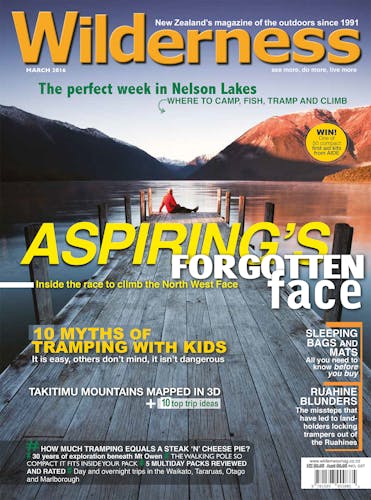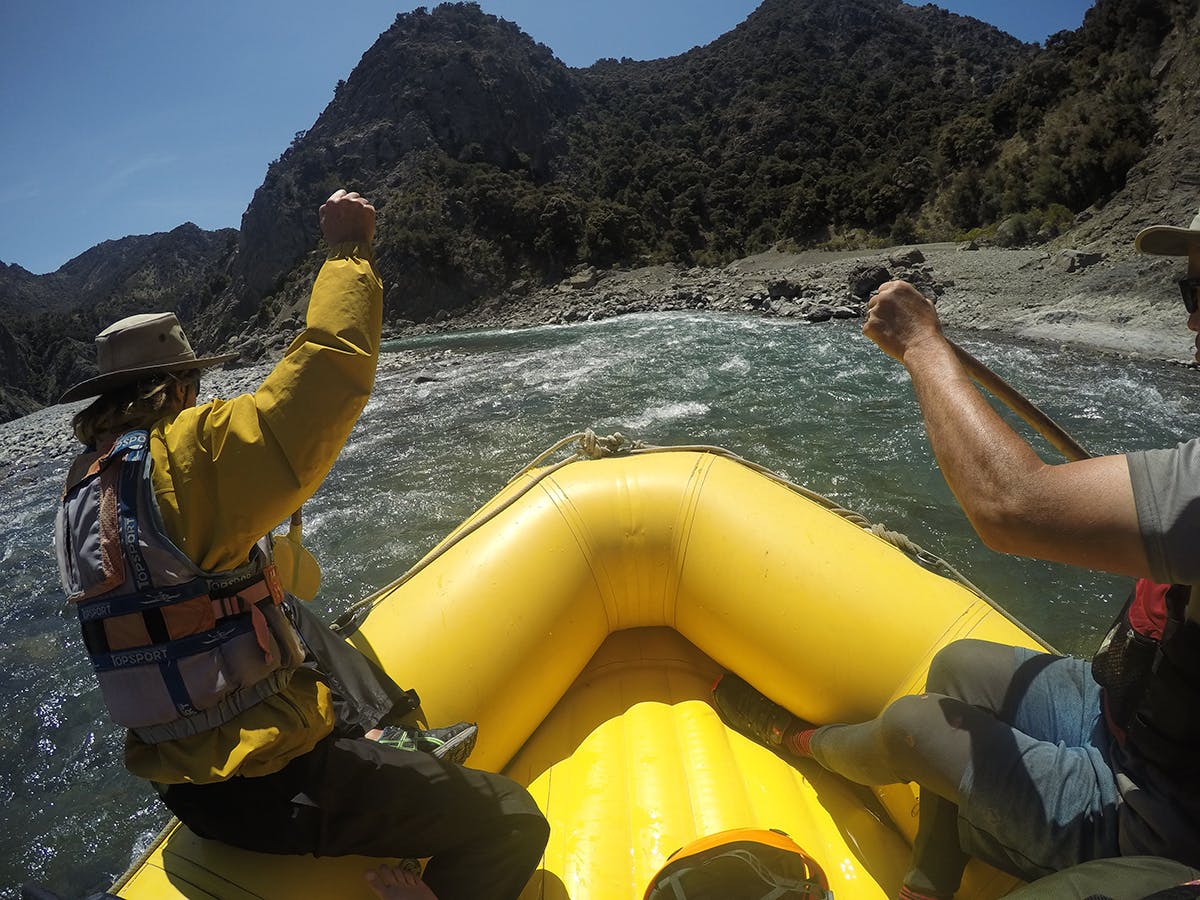On a week-long rafting trip, Mick Abbott comes to view rivers in an entirely different light
Big rivers are my adversary. I’ve walked for 30km on the true left of the Landsborough looking for a place to cross, then camped in the hope the snow melt would slow enough overnight to make possible a heart-in-mouth crossing at Creswicke Flat. I’ve raced southerly fronts in Fiordland to bounce across the outflow between Lake Cadman and Cora Lynn Falls in Edwardson Sound. I’ve been swept downstream trying to get across the Dart, backed-off a third of the way across the Buller, and almost drowned in a swollen side stream one winter on the Milford.
Drowning has long been known as the New Zealand death. Before bridges were built, rivers were ever-present barriers to getting around. Provinces were often defined by them. For instance, Canterbury ends at the Waitaki River, with Otago beginning on its southern bank. Fifty years ago, Mona Anderson’s book A river rules my life, describing her time living on the other side of the Wilberforce, was a best seller.
Likewise, on any given tramping day it’s crossing a river that often presents the main obstacle. Many’s the time two nights and even four have been spent waiting for a river to drop.
This summer I got to spend eight days stuck on one river, and all by choice. However, rather than trying to cross it, the challenge was to go down it. Three families, two rafts, two kayaks and 225km of sunshine as we drifted, dropped, and, at times, paddled into head winds on the Clarence River.
Instead of Santa and gift wrapping, Christmas Eve was spent packing and repacking barrels of food and dry bags of kit. Next day, on the drive to the Acheron homestead, I scared those in our car with stories of dangerous rivers, of how they want to drown you, and how important it was to be cautious absolutely all of the time.
Then it was onto a raft for the very first time.
Being on a river rather than alongside it is completely different. It’s all about reading the flow so you go downstream as effortlessly as possible. Rather than a foe, moving is part of a long conversation as we listened to and learnt the character of the river.
The Clarence was relatively low, and the water crystal clear. It wasn’t the mountains that mesmerised, though seeing Tapuae O Uenuku’s eastern route, complete with 2500m vertical height gain, is inspiring. Nor was it the challenge of key rapids like the Jaw Breaker and Carnage Corner.
Rather, it was the seductive, undulating and ever changing way the river and the bed it flows over play out its long journey to the sea. Here, a natural beach forms that anyone could cross… against this bluff, an eddy and a bottomless pool… there, a maelstrom of rocks that, like being in a pinball machine, we bounce and try to pick our way through.
In the mornings, the water had a cool tinge, but once the sun gave full heat the river became the place to escape. Passing Muzzle Station, in the middle of yet another sweltering day, we came across farmers and their families sitting in the middle of the river. Elsewhere cattle and wild goats came down to the water.
The strangest moment, I blame the heat again, was when a couple of bored off-roaders near Ravine Hut pulled out their golf clubs and rained golf balls down at us, one landing in one of the kayaker’s pockets.
One of many magic moments had us all swimming in a deep fast flowing pool, wrestling with its flow, to reach an isolated diving rock.
The camping was excellent on New Year’s Eve, tucked into a forest grove of giant matai. Marshmallows, cider and the call of a kiwi. Reaching the road bridge on SH1 the next day was an abrupt end for us. Yet after a week on the water there’s no sense that this is the end of the river. It hits the ocean, but there’s always more water being carried down. It’s the river’s flow rather than its destination that is its life.
Years of reading topo maps had rendered my idea of a river to a thin blue line. When choosing where to cross, looking out for where the river is widest, smoothest and shallowest, is the key skill. And once over, you put it behind you.
But on the Clarence my thinking shifted. A river has a personality that is multi-dimensional. Its surface is rarely flat, it’s always dropping, shifting, an ever present body of water moving across its bed with a topography that’s intimate and ever- changing.
I can understand why kayakers and rafters are our staunchest defenders of wild rivers. Ever-vigilant and working hard to keep them undammed, pure and free.
Qualities I was fortunate to discover over summer, as this river became my friend.








